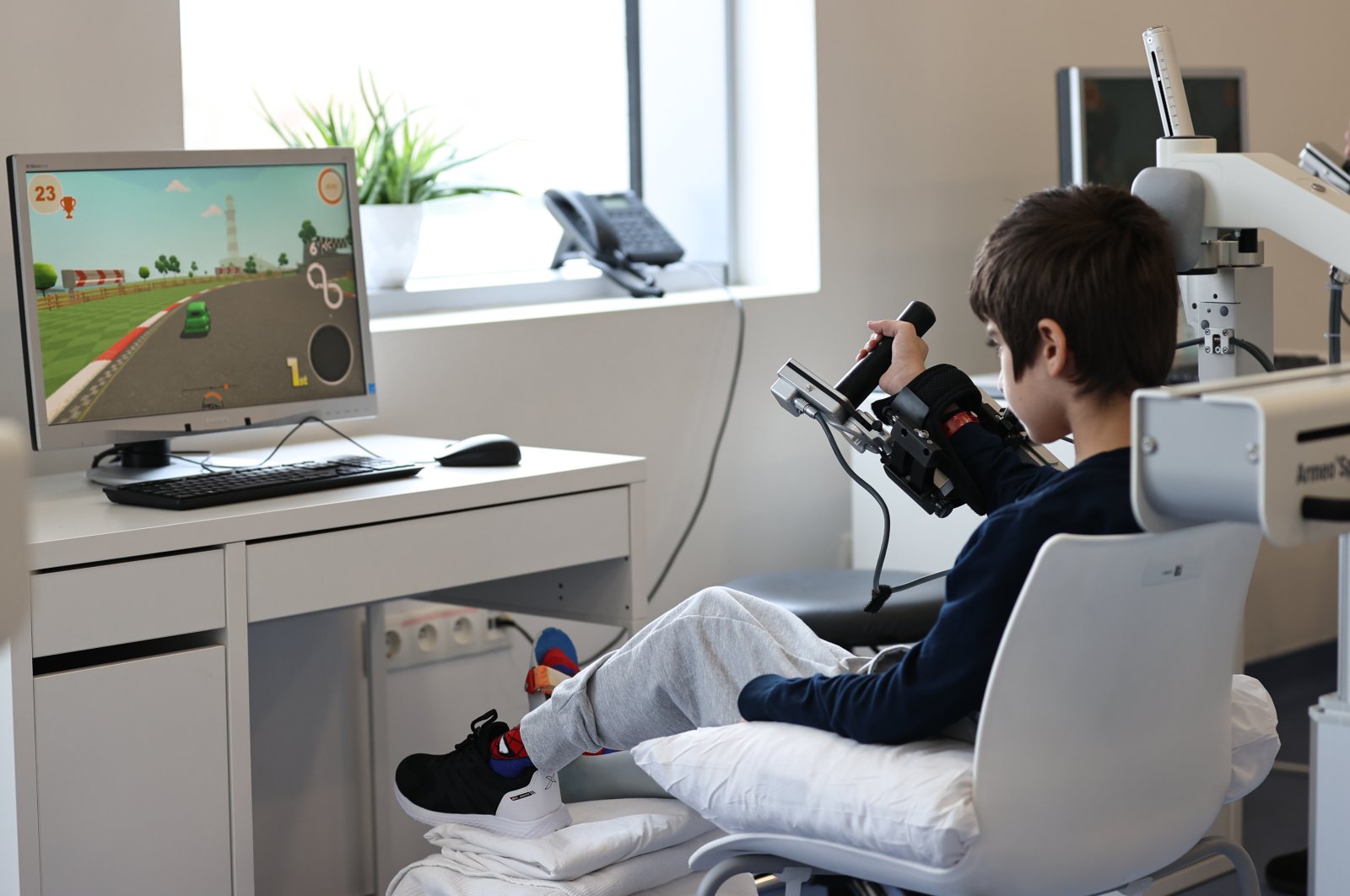
Earthquake survivors rescued from the rubble of the Kahramanmaraş-centered earthquakes with leg injuries, spinal cord trauma or brain damage are recovering with treatment at the Robotic Rehabilitation Center in Ankara Bilkent City Hospital.
Dr. Zeynep Aydan Kurtaran, a specialist at the hospital, told Anadolu Agency (AA) that robotic devices and virtual reality have become a part of modern medicine. "This technology is used in intensive and repetitive therapy to help patients regain their ability to walk. We are one of the largest centers in Türkiye and one of the few in Europe. In addition to robotic systems, we also use balance systems in which arm and hand exercises are carried out," Kurtaran said.
Sharing the details of this technology, she said, "The robots either make the patient move or direct the movement," adding that the most important advantage of the system is that it facilitates movements very similar to normal walking and constantly carries out stimulation in the brain.
Patients with spinal cord or brain damage, as well as those who suffered a stroke, have cerebral palsy, spent extensive time in intensive care, underwent orthopedic intervention, have difficulty walking due to long periods of inactivity or have Parkinson's disease are also treated at the center.
Kurtaran explained that the robotic walking system provides therapy that includes movements for the affected foot and leg that mimic a normal gait. The patient is suspended over a treadmill and walking movements similar to the normal gait are facilitated with the help of the robotic apparatus placed on both sides of the legs.
Noting that body weight, walking pace and joint angles are controlled by a computer program through the sensors on the device during the treatment, Kurtaran said, "There are virtual reality screens where patients can see their own movements."
Emphasizing the importance of the robotic rehabilitation process, Kurtaran said, the number of sessions varies according to the patient's condition, each session lasts for 45-60 minutes with 10-30 sessions. After the sessions the patients' sleep was regulated, their functional movements and their self-confidence increased.
"We can accept 50 patients a day in our center, it reaches 1,500 patients a month. After the great disaster, patients with spinal cord and brain damage and head trauma were brought to our hospital. We are trying to treat our earthquake survivors first."
One patient, an earthquake survivor, described his situation, saying: "I had no hope until I came here. I really got back my motivation to live my life here. Doctors, especially everyone who takes care of us, are very good. They look after us like a family here. I am hopeful that I will walk out of this hospital on my feet."
